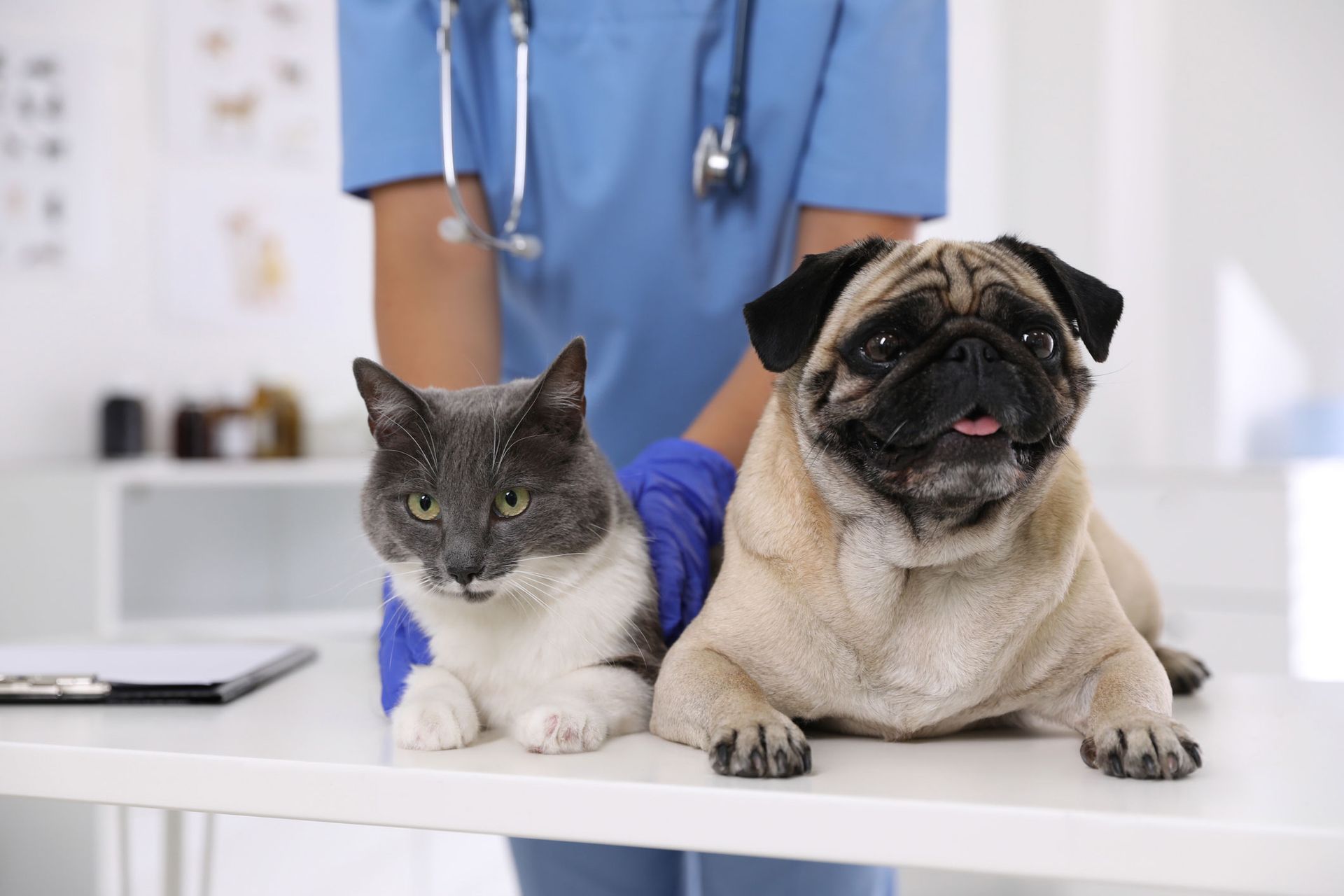What is a Pet Emergency and how to spot it
Pet Emergencies and What to do if your Pet is having an Emergency

When Should You Take Your Pet to the ER? Understanding Symptoms and When to Seek Immediate Care
Cats and dogs can experience a variety of symptoms, some of which may require urgent veterinary attention, while others can be addressed at a later time or during a scheduled appointment with their regular vet. Knowing which signs are an emergency and which ones can wait can help you make the right decision for your pet’s health.
Please note:
This list is not exhaustive, and it’s important to remember that no single symptom can definitively diagnose a condition. Always consult a veterinarian (or Poison Control, when appropriate) before making any decisions about your pet’s care.
If you're ever uncertain, it’s always best to err on the side of caution. If you’re concerned, don’t hesitate to bring your pet to an emergency veterinary hospital, even if the symptoms seem mild.
When to Visit the Emergency Vet
The following symptoms may indicate a true emergency and should be evaluated by a veterinarian as soon as possible:
- Breathing Problems
- A respiratory rate of 50 or more breaths per minute (not caused by panting)
- Open-mouth breathing in cats (this is always an emergency)
- Loud or noisy breathing in brachycephalic (smushy-faced) cats or dogs, especially if it's new
- Abdominal heaving with every breath
- Extension of the neck while breathing
- Weakness, Staggering, Shaking, and Mobility Issues
- Sudden and severe weakness or collapse
- Difficulty walking, stumbling, or appearing drunk
- Disorientation, mental confusion, or inappropriate behavior
- Abnormal shaking, restlessness, pacing, or inability to get comfortable
- Seizures or tremors
- Sudden limping or loss of motor control, especially in cats
- Inappropriate Urination, Defecation, Diarrhea, and Vomiting
- Straining to urinate or defecate, particularly in male cats
- No urination for over 24 hours
- Diarrhea that is liquid, bloody, or black, especially when combined with loss of appetite, lethargy, or vomiting
- Retching or attempts to vomit without producing anything, or a bloated, firm, or tense abdomen
- Vomiting three or more times in 24 hours, accompanied by a lack of appetite, lethargy, or diarrhea
- Bleeding, Wounds, and Trauma
- Ongoing bleeding, especially if it's pulsating (i.e., bleeding with every heartbeat)
- Bite or puncture wounds around the neck, chest, or abdomen
- Severe trauma, such as being hit by a car, falling from a height, or being stepped on
- Abnormal Appearances or Behavior (Skin, Gums, Eyes, and Sounds)
- Pale or blue gums, especially with lethargy or weakness
- Sudden bruising with no known trauma
- Severe pain or vocalizations
- Facial swelling or hives
- Bulging eyes or sudden blindness
- Squinting eyes or excessive tearing
- A fever above 102.8°F, especially if accompanied by lethargy, loss of appetite, or other symptoms
- Suspected Exposure to Toxic Substances or Medications
- Always call Poison Control immediately if you suspect your pet has ingested something toxic, such as:
- Xylitol (for dogs)
- Lilies (for cats)
- Grapes/raisins (for dogs)
- Chocolate (dose-dependent, for both cats and dogs)
- Antifreeze (for both cats and dogs)
- Insulin overdose
- Over-the-counter or prescription medications not intended for your pet
- Common human medications like acetaminophen (Tylenol), which can be fatal to cats
- Rodent poison
Symptoms That May Be Safe to Wait On
While still important, the following symptoms may be less urgent and could potentially wait until the next day or an appointment with your regular vet:
CAUTION: No single symptom can universally determine whether a pet needs immediate care. Always consult your vet if you're unsure or concerned.
- Coughing, as long as there’s no labored breathing and your pet can rest comfortably
- Sneezing or a runny nose
- Not eating for less than 24 hours
- Vomiting once or twice within 24 hours but otherwise acting normal
- One or two episodes of diarrhea in 24 hours with normal behavior
- Limping (some types of lameness, particularly in adult cats, require closer attention, so check with your vet)
- Itchy skin or ears, or a fluid-filled pocket in the ear
Symptoms That Can Be Safely Monitored at Home
Certain symptoms may not require an immediate vet visit and can be safely monitored or treated at home. However, always consult a veterinarian to ensure your pet is receiving the appropriate care:
- Torn toenail with minimal to no bleeding
- Minor wounds or abrasions
- New lumps or bumps (that don’t resemble hives, which are an emergency)
- Ticks (can be safely removed with tweezers)
- Fleas
- Worms seen in stool (especially in puppies, kittens, or outdoor cats, provided no other clinical signs are present)
You know your pet best, and if you notice anything unusual, it’s always best to reach out to your vet or visit an emergency clinic. While we hope you never need emergency care, we’re always here to help if you do.

